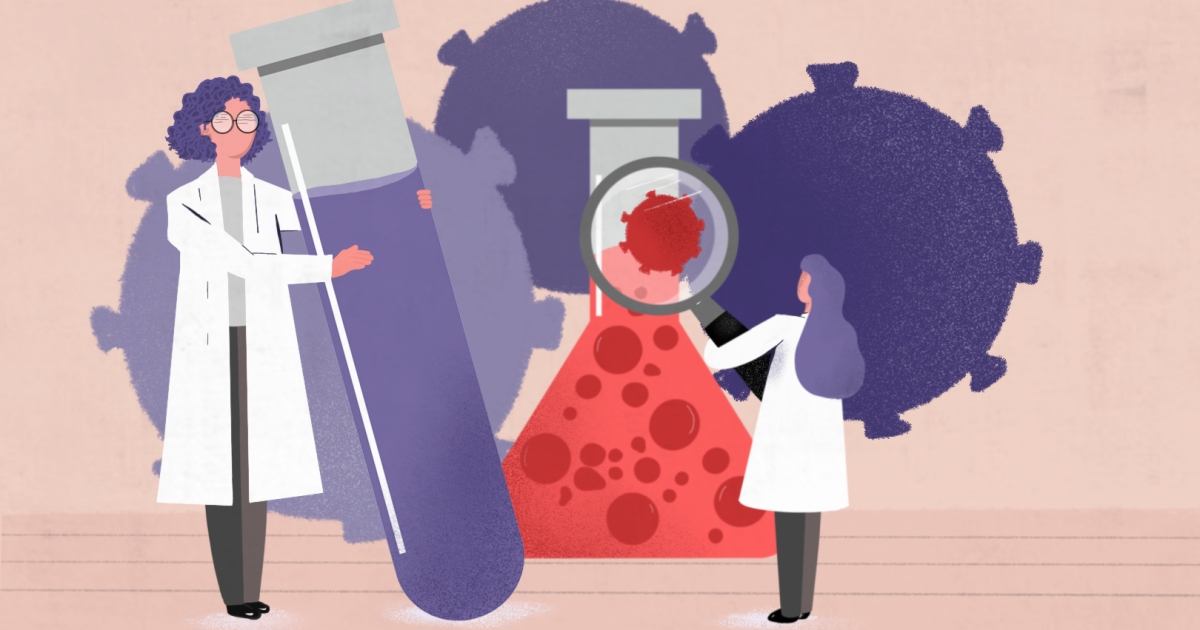The World Health Organization, or the WHO, identified a new novel coronavirus variant, the B.1.1.529 or the Omicron variant, as a Variant of Concern. The decision to recognise it as a Variant of Concern was grounded on evidence from the WHO’s Technical Advisory Group on Virus Evolution.
The Omicron variant of COVID-19 was first identified in Botswana and South Africa and has spread worldwide in more than 110 countries.It is currentlycirculating in Britain, Norway, and Denmark, but it still isn’t so widespread as of date. The Delta variant is still the dominant COVID-19 variant globally, but Omicron is expected to spread and infect half of Europe within weeks. As of December 21, 2021, Europe saw 12,947 confirmed Omicron cases, while the United Kingdom saw 10,886 cases.
While researchers haven’t understood the new variant’s nature yet, scientists have determined that the Omicron variant carriesmultiple mutations. The variant has a combination of 50 mutations that have not been seen in combination before. The mutations include more than 30 genes in the spike protein gene responsible for the virus attaching to human cells.
Based on what experts saw first-hand on the various data regarding Omicron, the new variant’s potential transmission rate is very concerning. The new variant’s doubling time is about three days, shorter than Delta’s two weeks, implying that Omicron will spread more quickly and eventually outpace Delta. A higher transmission rate can lead to more infected people and anoverwhelmed healthcare system.
Some hospitals have already seen how infectious Omicron is as the majority of their patients now are positive for Omicron after only three weeks. In contrast, Delta took three months to surpass 80% of total cases.
While transmissibility is high, early findings suggest that Omicron’s severity is less than other variants.In South Africa, it was reported that adults with Omicron were 29 per cent less likely to be hospitalised. In the United Kingdom, the admission rate among Omicron-infected people who went to the emergency room was one-third of Delta’s rate. Additionally, the lower severity applies to all age groups.
The Omicron variant may be less severe than Delta, but people with compromised immune systems remain vulnerable to the new variant.Also, current vaccines are reportedly less effective at preventing Omicron’s symptoms than Delta’s.
Even though Omicron is less severe than Delta, the high transmission rate can lead to high death rates when hospitals get swamped with Omicron-infected people. Regardless of how severe the variant is, everyone should be wary of it.Getting vaccinated is still the best way to protect oneself from the virus. Taking a booster shot is also recommended since both vaccinated and unvaccinated individuals are still at risk from Omicron, and a booster shot can supplement the initial vaccine’s efficacy.
Regarding the symptoms, Omicron’s is by far milder compared to that of other variants. Many patients who contracted the Omicron variant of COVID-19 did not report any taste or smell loss and haven’t suffered any drops in oxygen levels. The most general Omicron symptoms are the below:
- Runny nose
- Headache
- Fatigue
- Sneezing
- Sore throat
Today, many patients showmore minor pneumonia-like symptoms and hyperactive immune systems than seen during the previous waves. Right now, the symptoms are more like that of a simple head cold. However, even if Omicron’s symptoms are mediocre compared to Delta and the other variants, the World Health Organization still warns not to dismiss them.
When getting tested for COVID-19, a PCR test remains an effective means to detect the virus. A rapid antigen test, however, is slow when identifying Omicron infections. In a study that has yet to be peer-reviewed, PCR tests showed positive results faster than a rapid test.
Even though Omicron is a new variant, people can still protect themselves from the virus by following the already established health safety practices written below:
- Always wear a mask, regardless of whether you’re vaccinated or not.
- Practice social distancing, preferably a physical distance of about one metre.
- Always wash your hands.
- Stay at home, especially if you feel sick.
- Start a healthy lifestyle, and always drink plenty of water.
- Get vaccinated.
- Get a booster shot.
- Before attending a gathering, take a PCR test, especially withOmicron symptoms.
It is still too soon to know if Omicron will have long-term symptoms, but experts hope this isn’t the case. This is because Omicron tends to stay out of a person’s lungs. They are coupling this with the fact that more and more people are getting vaccinated. The vaccines that can prevent the symptoms from developing can potentially reduce the chances of Omicron having long-term consequences.
For a more condensed article about the Omicron variant, see this infographic by Harley Medic International.







